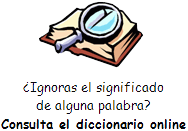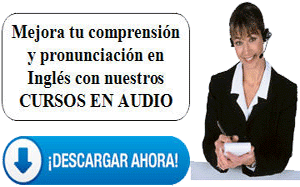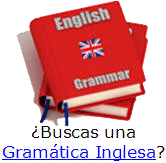Hi, everyone.
How’s your day going? This morning, the Metro was loud, hot and crowded…again.
And the train driver kept stopping and starting so I lost my footing and
bumped into someone. Ugh.
I need a different way to get to work! But what? Oh, I know: I’ll buy a
new folding bike! Oh wait – or is it a folding new bike? No, that
doesn’t sound right. New folding bike is right.
I just used two adjectives to describe the bike: new and folding. But
why couldn’t I change the order? The answer is that they are cumulative
adjectives. And, in today’s program, I’m going to tell you about them.
Cumulative adjectives
When we use more than one adjective to describe a noun, the adjectives
are either cumulative or coordinative.
Cumulative adjectives are adjectives that must appear in a special order
to express the meaning that we want to express. For example, if I told a
native English speaker I was buying a folding new bike, they might not
understand me.
You’ll note that I also used three adjectives to
describe the Metro: loud, hot and crowded. But those adjectives are
coordinative. They do not follow a special order. And they have
different punctuation rules.
The order of cumulative adjectives is as follows: quantity, opinion,
size, age, color, shape, origin, material and purpose.
Quantity
Let’s talk about the first one – quantity.
These adjectives answer the question “How much?” or “How many?” They can
refer to specific numbers, like two or 31, or to more general amounts,
like “whole” “half” “a lot” or “several.”
Let’s hear an example:
I’m about to order two large pizzas. Which toppings do you like?
The adjective “two” comes before the adjective “large” and they both
describe the noun “pizza.”
If the person had said, “I’m about to order large two pizzas,” the
listeners would have probably been confused. That’s strong evidence that
these are cumulative adjectives.
Opinion
Next in word order comes opinion adjectives, which express how we feel
about something.
Descriptive words like “tasty” “strong” “ugly” “costly” “stubborn” and
“happy” are examples of our opinions.
For instance:
I ordered two tasty large pizzas for the game.
The three adjectives -- two, large and tasty -- all work as a group to
build meaning onto one another rather than act as individual
descriptions of the noun “pizza.”
Size
OK, now onto size. This includes any number of descriptive size words,
such as “large” “big” and “little.”
In our pizza example, the size (large) follows the established order.
Here it is again. Listen for the word “large” after the other adjectives.
I ordered two tasty large pizzas for the game.
Age
OK, next is age. This can refer to specific age adjectives, such as 16-year-old,
or such words as “young” “old” “middle-aged” and so on.
One thing to note is that, in English, it is possible but not common for
more than three adjectives to describe one noun in speech or writing.
In addition, not all native speakers or English experts put age after
opinion.
With that in mind, consider this example:
The big old ugly pick-up truck puttered along the road.
That is how I – along with many American English speakers – would say it.
Notice that I put the word “old” before the opinion “ugly.”
But, based on the traditional order, it would go like this:
The ugly big old pick-up truck puttered along the road.
Shape
Next up, we have shape. This includes words like “long” “short” and
“round” or words for specific shapes, like square.
Here’s how you might use it:
The ugly big old wide pick-up truck puttered along the road.
That's a lot of adjectives for one noun -- a rarity but not impossible.
Color
And now we come to color. We normally use color adjectives to describe
objects and animals:
The ugly big old wide red pick-up truck puttered along the road.
Does this sound like too many descriptive words? That’s because it
probably is.
Origin
Alright, let’s talk about the next group: origin, ethnicity and religion.
Words like Persian or Christian fall in this group.
But, instead of putting several adjectives before one noun, let’s hear
what a real person might say:
We found a beautiful 200-year-old blue Persian rug.
Material
OK, then there’s material. Material adjectives are usually nouns that
act as adjectives when used to describe other nouns -- like metal, paper
and silk.
We’ll build on the rug example, like this:
We found a beautiful 200-year-old blue Persian silk rug.
As you can hear, five adjectives do not sound very appealing! But
technically speaking, it is both correct and acceptable.
Purpose
Finally, we have purpose. Remember back when I described the bike I
hoped to buy? I used the word “folding” to describe a very specific kind
of bike.
For purpose adjectives, we usually also use a noun as an adjective.
“Folding” is a gerund – a kind of noun ending in -ing.
So, let’s suppose I got my wish. I might say this:
My pretty new electric folding bike is so much fun! I’m very happy with
it. |
 Sugerencias:
Sugerencias:![]() ). Utiliza el botón derecho del ratón y "guardar enlace" para
descargar el fichero a tu PC, tablet, Smartphone, etc.
). Utiliza el botón derecho del ratón y "guardar enlace" para
descargar el fichero a tu PC, tablet, Smartphone, etc.
![]() Escucha el audio
Escucha el audio
![]() ¿Quieres recibir en tu e-mail gratis y
periódicamente ejercicios, programas gratuitos, explicaciones y otros recursos
para mantener tu inglés sin esfuerzo? Apúntate a nuestro
cuaderno mensual de inglés.
¿Quieres recibir en tu e-mail gratis y
periódicamente ejercicios, programas gratuitos, explicaciones y otros recursos
para mantener tu inglés sin esfuerzo? Apúntate a nuestro
cuaderno mensual de inglés.




